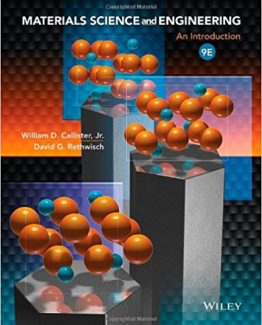Methods in Cilia and Flagella 1st Edition by Renata Basto, ISBN-13: 978-0128024515
[PDF eBook eTextbook]
- Publisher: Academic Press; 1st edition (April 8, 2015)
- Language: English
- 614 pages
- ISBN-10: 0128024518
- ISBN-13: 978-0128024515
Cilia are tiny cellular structures made of microtubules that play a variety of essential functions in many eukaryotic cells. Initially, electron microscopy studies identified and described a remarkable organization of the ciliary microtubule axoneme that resembled the structure of basal bodies and flagella. This beautiful ninefold symmetry, which still draws the attention of newcomers, and old “habitue´s,” in the field, is probably one of the reasons for such a success in early years of cilia research among cell biologists. However, although these initial ultrastructural studies used vertebrate cells such as human airway or photoreceptor cells, or crown cells from fish, for almost 40 years, research on the function and assembly of cilia was restricted to less mainstream organisms such as the green algae Chlamydomonas and the protists Paramecium and Tetrahymena. Cilia and flagella were mainly seen as organelles playing functions in unicellular locomotion and a great deal of attention was given to how motors, in particular dynein, could influence microtubule sliding and hence movement of the axoneme. Even though most cell biologists knew that cilia were to be found on virtually every cell in the human body, somehow the idea persisted that these cilia were not functionally relevant. Seminal work resulted from studies in Chlamydomonas, where “lollipop-shaped structures ” were first seen moving between the plasma membrane and the microtubules of the axoneme, a process now well known and characterized called intraflagellar transport (IFT). The identification of IFT components then allowed the cilia research community to understand that homologues of these proteins were present in a large variety of organism including man. In particular, the identification of the IFT88 homologue in mammals as a gene associated with a devastating human disorder, polycystic kidney disease, sparked a renaissance of interest in ciliary biology. This work not only put forward the hypothesis that IFT represented the mechanism by which cilia and flagella are assembled in all organisms, it also established for the first time, a possible link between defects in this process and a human disease. Cilia have since then been in the spotlight and growing evidence has shown us that several human diseases now known as ciliopathies result from mutations in genes that code for cilia components. Although several arguments justified already a great deal of commitment of the research communities studying cilia, another critical point was achieved when hedgehog signaling, a pathway known to play essential functions during animal development, was shown to depend on the presence of an intact cilium in mammalian development. Why certain signaling pathways require the clustering of receptors within the cilium membrane is still a matter of debate. Even if in present days cilia biology is about to understand the function of this organelle in development and disease, the basic cell biology of cilia is still poorly understood. In recent years, a great deal of attention has been given to the transition zone, a diffusion barrier that regulates cargo exchange between the cilium and the cell. In this method series, we brought together both different model systems and approaches with the aim of providing researchers interested in cilia and flagella biology with methodologies that can be applied to their questions. These include different types of cilia such as sensory cilia in mouse photoreceptors (L. Li and colleagues, page 75-92) and in Drosophila chordotonal organs (J. Vieillard and colleagues, page 279-302), primary cilia imaging in the mouse kidney (M. Hoshi and colleagues, page 1-18) or the mouse brain (JTML Paridaen and colleagues, page 93-130), motile cilia in Ependymal cells (N. Delgehyr and colleagues, page 19-36), in the trachea (E.K. Vladar and colleagues, page 37-54), in Xenopus (E. R. Brooks and J. B. Wallingford, page 131-160), in Sea Urchin (R.L. Morris and colleagues, page 223-242), in the flat worm Planaria (C. Basquin and colleagues, page 243-262), in Marsilea (S. M. Wolniak and colleagues, page 403-444), and in Paramecium (A. A. Fleury and colleagues, page 457-486); Furthermore, methods for live imaging analysis of IFT in Trypanosomas (J. Santi- Rocca and colleagues, page 487-508) and human cells (H. Ishikawa and W.F. Marshall and colleagues, page 189-202), quantitative approaches to study fluid flows in Zebrafish Kupffer’s vesicle (C. Fox and colleagues, page 175-188) or cilium bending in endothelial cells in Zebrafish (F. Boselli and colleagues, page 161-174) are also provided. Methods to study cilium orientation in the mouse heart (N. Diguet and colleagues, page 55-74), quantitative analysis of tubulin modifications of the Drosophila flagellum (T.M. Mendes-Maia and colleagues, page 263-278), protein entry into the primary cilium (D.K. Breslow and M. V. Nachury, page 203-222), G-protein coupled receptors in primary cilia in Caenorhabditis elegans (K. Pal and colleagues, page 303-322), TIRF imaging in Tetrahymena (Y.Y. Jiang and colleagues, page 445-456), flagellar motility in Chlamydomonas (K.I. Wakabayashi and R. Kamiya, page 387-402), genomic approaches to identify genes involved in flagellar assembly (H. Lin and S. K. Dutcher, page 349-386), transition zone ultrastructure and function in C. elegans (A. A. W. M. Sanders and colleagues, page 323-348), and scanning and 3D electron microscopy methods for the study of Trypanosoma and Leishmania flagella (S. Vaughan and colleagues, page 509-542) complete this volume.
What makes us different?
• Instant Download
• Always Competitive Pricing
• 100% Privacy
• FREE Sample Available
• 24-7 LIVE Customer Support






Reviews
There are no reviews yet.